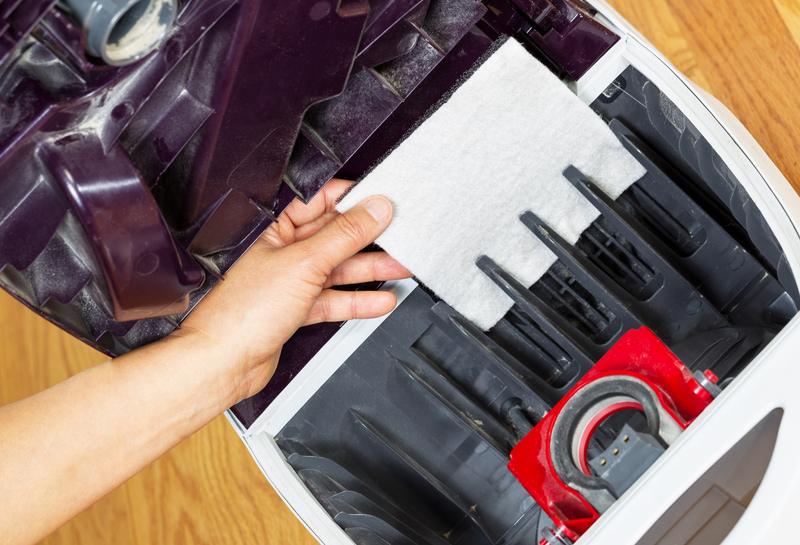Eco-friendly solutions for pristine uPVC window frames
Posted on 01/10/2025
Eco-Friendly Solutions for Pristine uPVC Window Frames
uPVC window frames have become the preferred choice for homeowners and builders due to their durability, low maintenance needs, and cost-effectiveness. However, ensuring these frames remain immaculate while adhering to eco-friendly practices is a growing concern for many. In today's environmentally conscious world, people are seeking ways to have pristine window frames without causing harm to our planet.
In this comprehensive guide, we'll delve into a wide array of eco-friendly solutions for pristine uPVC window frames, from green cleaning alternatives to sustainable maintenance and recycling practices. Whether you're looking to clean, restore, maintain, or dispose of old uPVC, this article offers insights to keep your window frames sparkling and environmentally responsible.

Why Choose uPVC Window Frames?
uPVC (unplasticized polyvinyl chloride) has surged in popularity for window frames due to several notable benefits:
- Excellent resistance to weathering and decay
- Low maintenance requirements compared to wood or aluminum
- Effective insulation, improving energy efficiency
- Affordable and available in various styles and finishes
- Long lifespan, typically exceeding 20-30 years
However, while uPVC is durable, dirt, grime, and environmental pollution can mar its appearance over time. Using eco-friendly cleaning and maintenance methods protects both the look of your home and the environment.
Common Challenges Faced by uPVC Window Frames
To effectively maintain pristine uPVC windows, it's crucial to understand the issues they commonly face:
- Discoloration: Prolonged exposure to sun, rain, and urban pollutants can cause yellowing.
- Dirt & Mold Accumulation: Grime, algae, and mold tend to stick on frames, especially in humid climates.
- Scratches & Abrasions: Using harsh scrubbing pads can create visible surface scratches.
- Degradation from Harsh Chemicals: Common chemical cleaners can break down the uPVC or harm adjacent landscaping.
Given these challenges, it is essential to implement eco-friendly cleaning methods and materials to keep uPVC frames looking as good as new.
Environmentally Friendly Cleaning Methods for uPVC Window Frames
1. Opt for Natural Cleaning Agents
Eco-friendly uPVC window maintenance starts by swapping out harsh, chemical-laden cleaning agents with gentler, natural alternatives:
- White Vinegar Solution: Mix equal parts distilled white vinegar and warm water. This solution breaks down mineral deposits, removes greasy residue, and effectively cleans without toxic byproducts.
- Baking Soda Paste: Combine baking soda with a little water to form a paste. Spread over stubborn spots and gently scrub with a soft cloth. Baking soda is non-toxic and naturally deodorizing.
- Lemon Juice: The natural citric acid in lemon brightens dull frames while acting as a mild natural bleach. Combine with water for a fresh-smelling, effective cleaner.
- Eco-Friendly Commercial Cleaners: Several green-certified products are now available. Check labels for biodegradable, non-phosphate formulas safe for waterways and your landscaping.
2. Use the Right Tools
Microfiber cloths are a sustainable choice for cleaning uPVC. They attract dust and dirt without the need for additional cleaning agents. Soft sponges and natural bristle brushes also work well, but avoid anything abrasive that could scratch the surface.
3. Avoid Harmful Chemicals
Stay clear of chlorine bleach, solvent-based cleaners, and abrasive powders. These products not only degrade your uPVC window frames but also release toxic chemicals into wastewater and the surrounding environment.
- Look for non-toxic, phosphate-free cleaning solutions
- Avoid ammonia-based and petroleum-derived products
- Prefer plant-based surfactants and biodegradable ingredients
Sustainable Practices for Ongoing uPVC Window Frame Care
1. Establish a Regular Cleaning Routine
Consistency is key to ensuring pristine window frames for the long term. Commit to a bi-monthly or seasonal cleaning schedule using eco-friendly methods. This approach minimizes the buildup of stubborn grime and reduces the frequency with which you need powerful (and potentially less-green) cleaners.
2. Prevent Mold and Algae Growth without Harmful Chemicals
In humid or coastal climates, organic growth can dull and even damage uPVC. To tackle this:
- Wipe frames dry after rain with a clean, absorbent cloth.
- Spray affected areas with a diluted vinegar or hydrogen peroxide solution (hydrogen peroxide breaks down into just water and oxygen).
- Enhance ventilation indoors to minimize condensation.
- Trim back foliage near windows to reduce moisture and biofilm formation.
3. Eco-Friendly Lubrication for Moving Parts
Lubricate locks, hinges, and handles twice a year to keep them working smoothly without residue that can attract dirt. Opt for biodegradable lubricants, such as those made from vegetable oils, rather than petroleum-based ones that can degrade into harmful pollutants.
4. Minimize Plastic Waste During Repairs
For minor chips or cracks, try repair kits made with water-based or solvent-free adhesives rather than single-use plastic fillers or kits containing harmful chemicals. Choose products that demonstrate an eco-label or certification.
How to Restore Discolored uPVC Frames Sustainably
Discoloration can make even relatively new window frames look tired. While many products promise "like-new" whitening, they can be harsh and environmentally questionable. For a green approach:
- Start with gentle cleansing (vinegar, baking soda, lemon juice)
- If discoloration persists, try eco-safe uPVC restorer creams, many of which are now formulated using biodegradable, non-toxic ingredients
- Always follow up with a rinse of plain water to avoid residue
Never use acetone, strong solvents, or abrasive pads as these can strip the uPVC's surface, making it more vulnerable to future staining and creating environmental waste.
Protecting uPVC Frames from Environmental Damage
1. Install Protective Window Film
Specialist UV-blocking window films can significantly extend the aesthetic life of your uPVC by:
- Reducing direct sunlight exposure (which leads to yellowing and brittleness)
- Cutting indoor solar heat gain, thus saving energy
- Minimizing the need for chemical restorers and intensive cleaning
Choose window films that are lead- and toxin-free, and research brands committed to green manufacturing processes.
2. Use Eco-Friendly Paints and Sealants
If you wish to repaint your uPVC frames--whether for a color update or extra protection--opt for water-based, low-VOC paints. Avoid products with high levels of toxins or heavy metals such as lead and cadmium. The same applies to sealants: Select formulas labeled "low environmental impact" or "GECA-certified."
Recycling and Responsible Disposal of uPVC Window Frames
Eventually, every window reaches the end of its useful life. Luckily, uPVC is 100% recyclable. As part of a sustainable solution, be sure to:
- Contact local recycling facilities to check if they accept old uPVC windows or doors.
- Look for certified uPVC recycling companies who will process the material into new frames or eco-friendly building products.
- Avoid sending frames to landfill where they take centuries to decompose and contribute to microplastic pollution.
- If replacing windows, ask your installer about take-back or recycling programs.
Going One Step Further: Supporting the Circular Economy
The global construction industry is embracing the circular economy--a sustainable model where products are used for as long as possible, then reused or recycled into new ones. uPVC window frames are a perfect candidate:
- Many manufacturers now use recycled uPVC in new window frames, reducing the demand for virgin plastic and the environmental impact of production.
- Supporting companies with closed-loop recycling systems ensures your discarded windows become the raw material for future projects.
- Ask your supplier if their products are made with recycled content and if they offer end-of-life recycling support.
Innovative Green Upgrades for uPVC Window Frames
Modern window technology offers more than just clear glass and white frames. For homeowners serious about sustainability and pristine appearance, consider these innovations:
- Triple-glazed or low-e glass upgrades to further reduce heating/cooling demands
- Thermally broken frames for supreme insulation (these also use less material per frame, reducing environmental impact)
- Frames manufactured with 100% recycled uPVC
- Integrated solar panels or smart glass features to cut your carbon footprint

Additional Tips for Eco-Friendly uPVC Window Care
- Use rainwater or leftover household water (like cooled pasta water) for rinsing, cutting potable water use.
- Clean windows on overcast days to avoid streaks and excessive evaporation, reducing the need for repeat cleaning.
- Encourage your community or homeowner association to support sustainable window replacement initiatives and recycling schemes.
- Consider adding insect screens or shutters to reduce sun damage and further insulate your home.
- Always check product labels for eco-certifications such as EU Ecolabel, Green Seal, or Cradle to Cradle.
Conclusion: Achieving Pristine uPVC Window Frames the Green Way
Maintaining pristine uPVC window frames doesn't have to come at an environmental cost. By choosing natural, non-toxic cleaning agents, establishing green maintenance habits, opting for protective upgrades, and supporting recycling initiatives, you can keep your frames looking their best--and contribute to a healthier planet.
In summary, the most eco-friendly solutions for pristine uPVC window frames lie in:
- Regular, gentle cleaning with natural ingredients
- Sustainable restoration practices and environmentally conscious repairs
- Preventative care and protection from harsh environments
- Proper recycling and support of uPVC circularity
By integrating these green solutions into your window frame care routine, you'll ensure a sparkling home exterior--without compromising your eco-values.



